Best Tennis Racquets
Top 10 Rated Tennis Racquets 2024
By S. Dee Davis
There are tennis racquets available for all player levels with different designs, weights, and feels. Judging racquets based on their intended level, we selected the top 10 based on the following qualities:
1. Heavy enough to add a punch to shots and provide great control
2. Light enough to be easy to maneuver (and easy to arm)
3. Solid feel and response
4. Reduced vibrations
5. Produces a good spin on the ball
6. Suited for hitting balls at the baseline and volleying at the net
7. Strong, sturdy construction that maintains its quality
8. Good value for the price
9. Good length and comfortable grip
|
27.5 inches |
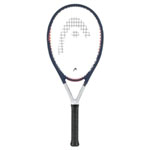 Available for nearly $70, the Head Ti S5 Comfort Zone Tennis Racquet is perfectly suited to intermediate players seeking control and comfort. This racquet, which has a 107 square inch…read more
Available for nearly $70, the Head Ti S5 Comfort Zone Tennis Racquet is perfectly suited to intermediate players seeking control and comfort. This racquet, which has a 107 square inch…read more
|
100 sq. in. headsize |
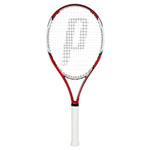 If you’re a serious tennis player hoping to improve your game, then you’ll love the Prince EXO3 Hornet 100 racquet, which offers the greatest precision and accuracy in shots. The head…
If you’re a serious tennis player hoping to improve your game, then you’ll love the Prince EXO3 Hornet 100 racquet, which offers the greatest precision and accuracy in shots. The head…
read more
|
Black and green |
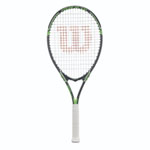 The Wilson Tour Slam Adult strung tennis racquet is an excellent choice for beginners with its lightweight yet powerful construction. It is also small enough to not overwhelm new tennis players…read more
The Wilson Tour Slam Adult strung tennis racquet is an excellent choice for beginners with its lightweight yet powerful construction. It is also small enough to not overwhelm new tennis players…read more
|
Black and white |
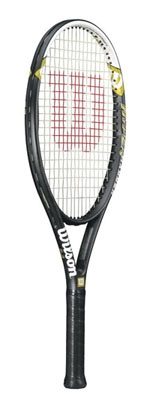 A sturdy racquet from Wilson, the Wilson Hyper Hammer 5.3 Strung Tennis Racquet has a large headsize to provide a large sweetspot. You’ll definitely feel the power in your hands with this lightweight…
A sturdy racquet from Wilson, the Wilson Hyper Hammer 5.3 Strung Tennis Racquet has a large headsize to provide a large sweetspot. You’ll definitely feel the power in your hands with this lightweight…
read more
|
98 sq. in. headsize |
 Suited to intermediate and advanced players, the Dunlop Hotmelt 300G tennis racquet has a 98-square-inch head and long length of 27 inches. Its special, durable construction and thick throat bridge…
Suited to intermediate and advanced players, the Dunlop Hotmelt 300G tennis racquet has a 98-square-inch head and long length of 27 inches. Its special, durable construction and thick throat bridge…
read more
|
98 sq. in. headsize |
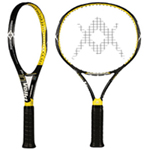 For the advanced player at level 4.5 or higher, this Volkl Organix 10 tennis racquet provides excellent control and a smooth response. At 10.4 ounces, the racquet isn’t so heavy that it’s difficult…
For the advanced player at level 4.5 or higher, this Volkl Organix 10 tennis racquet provides excellent control and a smooth response. At 10.4 ounces, the racquet isn’t so heavy that it’s difficult…
read more
|
11.3 oz. |
 The Babolat AeroPro Drive GT has a 100-square-inch head and long length of 27 inches, providing a satisfying pop to your swings while also…
The Babolat AeroPro Drive GT has a 100-square-inch head and long length of 27 inches, providing a satisfying pop to your swings while also…
read more
|
112 square inches head size |
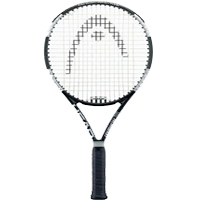 A tennis racquet from Head made of liquid metal, this racquet is stronger than typical titanium racquets. If you’re an avid tennis player…
A tennis racquet from Head made of liquid metal, this racquet is stronger than typical titanium racquets. If you’re an avid tennis player…
read more
|
102 sq. in. headsize |
 For true versatility, the Babolat E-Sense Comp Tennis Racquet is a winner. It handles shots well from the baseline and the net, and its 102-square-inch head has a great sweet spot, letting…
For true versatility, the Babolat E-Sense Comp Tennis Racquet is a winner. It handles shots well from the baseline and the net, and its 102-square-inch head has a great sweet spot, letting…
read more
Tennis Racquets Buying Guide
A Guide to Selecting a Tennis Racquet
Whether you’re a beginner, an intermediate, or an advanced tennis player, you should understand the basic principles behind tennis racquets and what makes one suited to a special kind of player. It can be daunting trying to select a tennis racquet due to the number of brands, sizes, shapes, and prices to choose from. Whenever possible, you should handle the racquet in person before making a purchase because each player operates at a different skill level and has a unique feel for the racquet.
You can judge a racquet by the size, stiffness, length, and weight of the frame.
- A large frame provides great power and is less likely to twist in your hand when you hit balls off-center. The larger the frame, the larger the sweet spot, or area of the strings where you’re least likely to feel the impact of the ball.
- A stiff frame also delivers great power and a bigger sweet spot. It helps distribute the impact of the ball across all the strings, giving you a uniform, solid-feeling response.
- The longer the racquet frame, the greater speed you’ll get when you swing it. The greater the velocity, the more power and spin you’ll get in your shots. A long racquet is also good for increased leverage and control. Racquets range from 27 to 29 inches long.
- A heavy frame, while difficult to wield for long periods without wearing out the arm, produces the greatest power. It yields a large sweet spot and also transmits fewer vibrations.
Also consider the head, or hoop, size. Racquets range from about 85 to 135 square inches.
- Beginners and intermediate players typically thrive with large-headed racquets. It’s easier to make shots even when the ball hits the racquet off-center, and you get great power due to the large sweet spot.
- Advanced players look for greater control with a small-headed racquet. Because of their advanced skill, they’re able to provide the power in the swing.
Weight and balance directly affect the unique feel of the racquet. They can either be heavier in the head or in the handle.
- Head-light racquets are preferred by most professional players because they offer the greatest maneuverability and control. Again, advanced players supply their own power, so they don’t need to rely on a heavy head to punch the shots.
- Head-heavy racquets are designed to be lighter overall without taking the weight and stability from the head. They’re still powerful, but some players complain that they don’t feel as solid as the traditionally balanced racquets. Others worry that lightweight racquets cause more tennis injuries because they transfer more vibrations through the player’s arm.
The string pattern has an effect on how the ball impacts against the racquet. Strings can be in either an open or closed pattern.
- Open string patterns feel loose and deflect the ball more upon impact, producing a great spin. However, these type of racquets require more maintenance because the strings are less durable and prone to breaking.
- Closed, or dense, string patterns produce less spin but provide greater control and durability. Look for racquets with a dense string pattern if you hit the ball hard with a topspin. You also won’t have to replace the strings often.
 |
As an avid golfer and tennis player for most of his life, he enjoys researching the latest in golf and tennis technology as well as analyzing his own game. He has been a writer and reviewer for a dozen years and his work has appeared in numerous publications including CBS, the San Fransisco Chronicle… See more about S. Dee Davis |
Featured Tennis Articles
5 Tips for Tennis Racquet Care
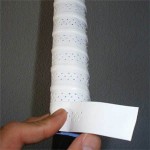
As you well know, a tennis racquet is your primary instrument for playing the sport, and it can be quite an investment. Some racquets cost well over $100, and you want to take proper care of them so you get the most out of them…[more]
Find Your Tennis Racket Grip Size
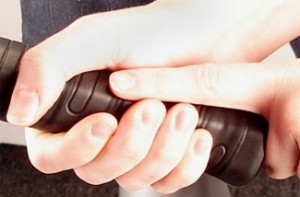
Getting the right grip size for your tennis racquet will make all the difference, not only with the quality of your game but also with the comfort of your hand, elbow, and arm. You don’t want the grip of your racquet to be too long…[more]
Prince EXO3 Black 100 vs. Prince EXO3 Rebel 95
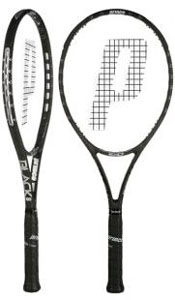
Prince has developed the EXO3 series of racquets, designed for the advanced player. Two racquets, the Prince EXO3 Black 100 Tour Series and the Prince EXO3 Rebel 95, are both high-end racquets with several different factors. Let’s compare the two models to see if one has a distinct advantage… [more]
Understanding a Tennis Racquet’s Sweet Spot
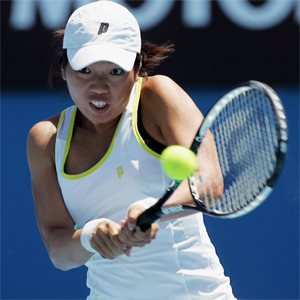
A tennis racquet with a large, stiff head provides an expanded sweet spot, as you’ve probably heard several racquet manufacturers say. If you’re new to tennis, you’re probably wondering what exactly is the sweet spot, and how does it affect how the ball hits the … [more]
Related Tennis Racquet Lists
Best Women’s Tennis Racquet
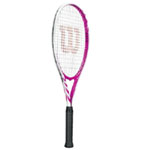
Tennis is a sport that can be learned and mastered in youth and carried on for a lifetime. If you’re a woman looking for the tennis racquet that’s just right for you, then this guide may help you find what you need… [more]
More Tennis Racquets
Filed Under: Sports • Tennis Racquets • Top 10 Lists
